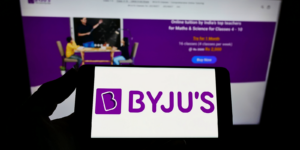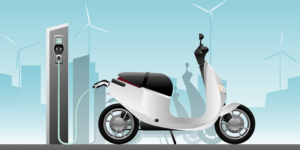Muskan Mehta, a 21-year-old software developer, was in a familiar conundrum: having nothing to wear for an event.
Having been invited to dinner with a friend’s family that night, she needed some outerwear to throw on in a hurry.
That’s when she came across fashion delivery app Slikk, which claims to deliver outfits to customers in one to two hours. About 60 minutes later, Mehta was shrugging on a new jacket before leaving for her dinner.
Mehta’s experience is a sign that the quick commerce frenzy has moved beyond simply competing on faster timings. From kitchenware to electronics, nearly every household essential is now available in under 10 minutes on apps like Blinkit and Zepto.
Now, quick commerce platforms have turned to a new arena—fashion and apparel.
Fashion, which represents around 80% of the $130 billion Indian lifestyle market, has become a key battleground for quick commerce platforms and a range of emerging startups, all vying for their share of the pie.
Fast delivery for last minute purchases is a leading reason for consumers to order from quick commerce platforms, followed by discounts, according to Datum Intelligence data cited by BofA.
Wardrobe basics like undergarments, tshirts or simple athletic wear are not a new sight on quick commerce channels. Men’s apparel brand DaMENSCH anticipates that quick commerce will contribute nearly 15% of its overall business within 1-1.5 years, generating around 50 crore.
The innerwear category is expected to dominate, accounting for 70-75% of sales, while core essentials like pyjamas, loungewear, and socks will make up the remaining 20-25%.
However, the emergence of name brand apparel and ‘trending’ styles raises the question of whether fashionwear can also be made available to customers in under 10-15 minutes.
“We believe that after FNB and FMCG, the next category wherein quick commerce will definitely have a big hold is lifestyle in general which further includes apparel, BPC, accessories,” says Akshay Gulati, Co-founder and CEO at Slikk.
In terms of lifestyle categories, the beauty and personal care category continues to be a huge driver for quick commerce sales, prompting peers from the ecommerce space to find alternatives to reach consumers faster in a bid to not lose market share to these platforms.
While platforms already showcase stock keeping units for accessories in terms of bags, wallets, belts and sunglasses, options for “trendy styles” are still in nascent stages.
Surfing the trend wave
Two segments can pick up well in quick commerce: standardised products (e.g. white shirts, inner-wear, flip flops) and occasional wear related to festivals, cricket events etc, believes Kushal Bhatnagar, Associate Partner, Redseer Strategy Consultants.
Kartik G Iyer, Strategic Marketing Consultant at Tata Cliq also believed that low-touch, low-feel categories with smaller ticket size are more poised for traction on these platforms.
Low-touch, low-feel garments are characterised by their use of smooth, functional materials designed for comfort and ease of wear. Users are able to understand the texture of the garment without feeling it by hand.
Along with selling dandiyas and Pujo essentials as the festive season goes strong, platforms are looking to add festive clothing options in terms of kurtas and suits in hopes to sway consumers for their last minute purchases.
IPO-bound Swiggy recently added clothing from premium ethnic wear retailer FabIndia on its platform, with kurta sets and pajamas for both men and women. Just a week later, its listed peer Blinkit, which already features select styles from men’s ethnic wear brand Manyavar, also added FabIndia to its roster.
Seasonality might not always result in immediacy, but quick commerce platforms are uniquely positioned to take the advantage of fleeting trends and shifting the offline demand to their channels as consumers flock towards convenience, says Iyer.
These platforms are banking on quicker turnaround times to capitalise on trends. Major quick commerce players offered cricket jerseys during the ICC World Cup, dupattas and ethnic wear during Navratri, and they might just add Santa Claus costumes during Christmas.
Beyond festive and seasonal wear, premium formal wear brand The Pant Project is also in advanced discussions with Zepto to list its products on the platform, Co-Founder Dhruv Toshniwal told YourStory.
Keeping 15-minute delivery timelines aside, bringing fashion closer to consumers is a challenge multiple brands and apparel marketplaces are looking to take on.
Bengaluru-based Slikk, which promises to deliver trendy styles and latest fashion gear in under 90 minutes, recently raised seed funding of $300,000 within a month in its operations further hinting at positive investor sentiment in the sector.
Domestic fast fashion player Newme also launched 90 minute delivery for select pincodes in Gurgaon. The retailer is also looking to expand the same to Mumbai and Bengaluru post-Diwali, Sumit Jasoria, Co-founder and CEO at Newme, told YourStory.
The double-edged returns sword
Fashion is notorious for being a return-intensive category due to its traditional try-and-buy nature. Consumers often change their mind about the product after checking the fit and feel of the product, qualities which are difficult to ascertain online.
While Zepto and Swiggy are in the process of piloting reverse logistics, either in-house or with third party logistic players, details on the final process are yet to be ironed out, according to people familiar with the matter.
Moreover, ecommerce players have the ability to recycle returns and make them readily available for sale, a capability that is not native to quick commerce brands, notes Tata Cliq’s Iyer.
When it comes to D2C players like The Pant Project, the apparel brands themselves are looking to take on the burden of reverse logistics, a part of the bargain with bigger quick commerce players.
On the other hand, companies like Slikk are piloting a different approach, allowing users to try the outfit and return it while the delivery person waits outside your door for 10 mins.
However, shorter delivery times ensure that consumers are usually at home to collect orders, which means lesser return-to-origin requests.
“At least early signs show that returns are very low compared to typical delivery right now. But it’s too early to say it’s a very small scale right now. At scale, we feel it will be similar to typical normal returns,” noted Jasoria.
Few to no returns is another reason why innerwear and basics have succeeded as a category on quick commerce channels.
“For a fashion brand where color, aesthetic, design etc. is very important, the general (rate of) marketplace returns can go as much as 40% or above. While we would have 15-20%, including RTO and everything,” says Anurag Saboo, Co-founder at DaMENSCH.
Aside from returns, apparel comes with tricky storage problems as well, considering companies have to store multiple units of multiple sizes of the same product to meet a minimum quantity criteria. Sellers would also have to hold inventory in multiple locations to adhere to expedited delivery timeline which is a capital intensive process.
“I think portals like Myntra are great for wider selection, fashion, constant new launches, newness in your wardrobe with their reasonable one day, two day, three day delivery timeline. But quick commerce could be useful for core SKUs and instant delight in certain limited SKUs for premium brands,” says Toshniwal.
Flip side for fresh fits
However, there is a silver lining, as apparel is more logistics-friendly as compared to other items like bulky FMCG goods and delicate electronics.
Moreover, a diversified advertising stream is a part of the upside for sellers listing quick commerce. Brands get visibility among less number of players as compared to ecommerce platforms, further improving their chances of brand recall.
“Quick commerce works on a very top-of-the-mind recall and top-of-the-list recall function with a very speedy process. So, if you are able to spend and get that first top set of slots for people to try on your product, that really brings your product to the forefront,” says Saboo.
DaMENSCH is currently available on all 3 quick commerce platforms and has steady marketing. It plans to further increase such investments as it adds more products.
Quick commerce platforms are also looking to get more familiar names and brands to list on the platform to ensure consumer trust and propensity to purchase. A known player invokes trust for the consumer, while promising reliable refresh cycles for the platform, allowing them to ensure that warehouse space is optimised.
This becomes an important factor since a dark store model is limited in the range of products it can stock, and unlike groceries, there are no set patterns for buying behaviour in apparel. Therefore, it is crucial to predict needs on a pin code level and stock accordingly down to color and size options, cautions Iyer.
For now, most planned purchases with higher price values are likely to be preferred on ecommerce sites, where availability of styles is prioritised over fast delivery, noted Naveen Malpani, Partner, Grant Thornton Bharat.
After her shopping experience with Slikk, Mehta also pointed out that while the instant delivery and returns feature was appealing despite a smaller selection, she would stick to popular vertical marketplaces like Myntra for discovery and variety and having a larger selection to compare prices.
According to a report by Bain and TMRW, the online fashion market overall is expected to grow to about $35 billion by the financial year 2028. While currently in its nascent stages, apparel is expected to be yet another front where new players are trying to chase the market away from legacy ecommerce platforms and websites after adding categories as expansive as sporting goods, latest iPhones and even laptops in some cases.
If a customer can quickly gather essential items like utensils and milk in just 10 minutes, their impatience levels can rise, especially regarding other products they typically purchase from legacy or traditional marketplaces, reasons Slikk’s Gulati.




![Read more about the article [Funding alert] Health and insurtech startup Loop Health raises $25M in Series B](https://blog.digitalsevaa.com/wp-content/uploads/2022/04/Featureimages-newdeck27-1650364799673-300x150.png)





